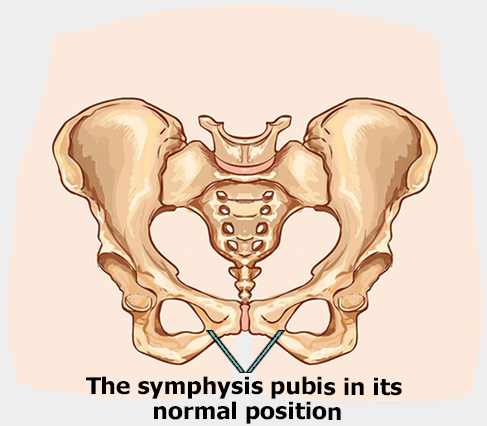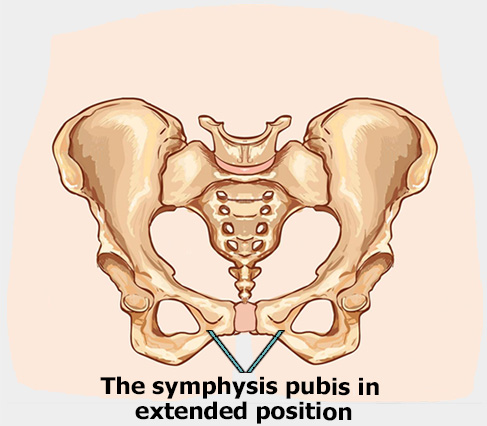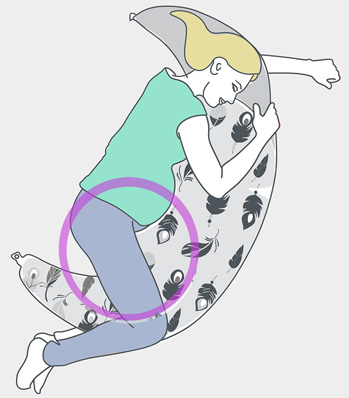?What is symphysis pubis dysfunction or SPD
Here are 7 useful tips we’ve put together for you to deal with this painful phenomenon during your pregnancy
SPD is a phenomenon caused by the loosening of ligaments connecting the pelvic bones. This loosening is the result of an increase in hormones (such as progesterone and relaxin) that prepare the body for birth. The phenomenon manifests itself in pelvic, hip and groin pain among pregnant and postpartum women.
So how do you know if you suffer from SPD yourself and how can the condition be treated?
If you are currently pregnant, you may well have heard of SPD. This is a phenomenon that affects many pregnant women and manifests itself in different degrees of pain that vary from woman to woman. Some women may suffer from pain in the area even after giving birth, but for the most part the pain disappears in the first days after giving birth.
The good news is that there are definitely things you can do to ease the pain.


How can SPD be diagnosed?
Place a finger in the area of the pubis bone, if you suffer from intense pain, this may indicate SPD.
If you have any concerns, you should consult a doctor, who will be able to accurately diagnose the situation with an ultrasound test.
If you do suffer from SPD, it is possible to treat and reduce pain, and even prevent it.
- It is recommended to sit upright and with your feet on the floor at an angle of 90 degrees.
- Attention to correct posture in daily activities while activating the correct muscles naturally when the body is relaxed. To learn how to do so you can use the "Alexander Method" treatment.
- Avoid carrying heavy weights.
- It is recommended to wear comfortable shoes and to avoid walking for long periods of time in high heels or shoes that do not provide sufficient support for the back and pelvis area.
- Strengthening the pelvic floor through simple physical exercises will help reduce the intensity of the pain.
- Chinese medicine provides holistic solutions based on the connection between the body and the mind.
- While sleeping it is recommended to lie on your side and use a pillow placed between your thighs. Closing the gap between the hips will reduce the pressure put on the pelvic area.
?What is important to consider when choosing a pregnancy pillow
•The thickness of the pillow should be adjusted to the gap between the thighs so that the upper thigh is at the level of the pelvis.
-
The padding should be stiff enough so that the hip does not sag and proper support is maintained.
A pregnancy pillow that reduces the pressure put on the pelvis through a precise fit
The brand KOALITA cozy innovations has been operating since 2018 and specializes in sleeping solutions for pregnant women. The brand's flagship product is the MoonLove pregnancy and breastfeeding pillow (a sample registered with the Patent Authority). The pillow helps relieve SPD pain (and in general pain in the pelvis, lower back and pubis during pregnancy).
How does It Work?
The edge of the pillow that is placed between the thighs closes the gap created by the expansion of the pelvis and reduces the weight of the upper thigh on the lower thigh and pelvis area. By doing so the pressure isn’t easily projected onto nearby organs such as the pubis and the lower back.
The uniqueness of the MoonLove pregnancy pillow is seen in its half-moon shape with a thickness that varies along its length - this allows for a precise adjustment of the thickness of the pillow required to close the gap between the thighs so that the upper thigh is aligned at the level of the pelvis, thus reducing the pressure and pain. With the right body pillow, you will be able to sleep just like you used to before pregnancy.
*This article was not written by a professional. Whenever the need arises - it is always advisable to consult a qualified professional.





